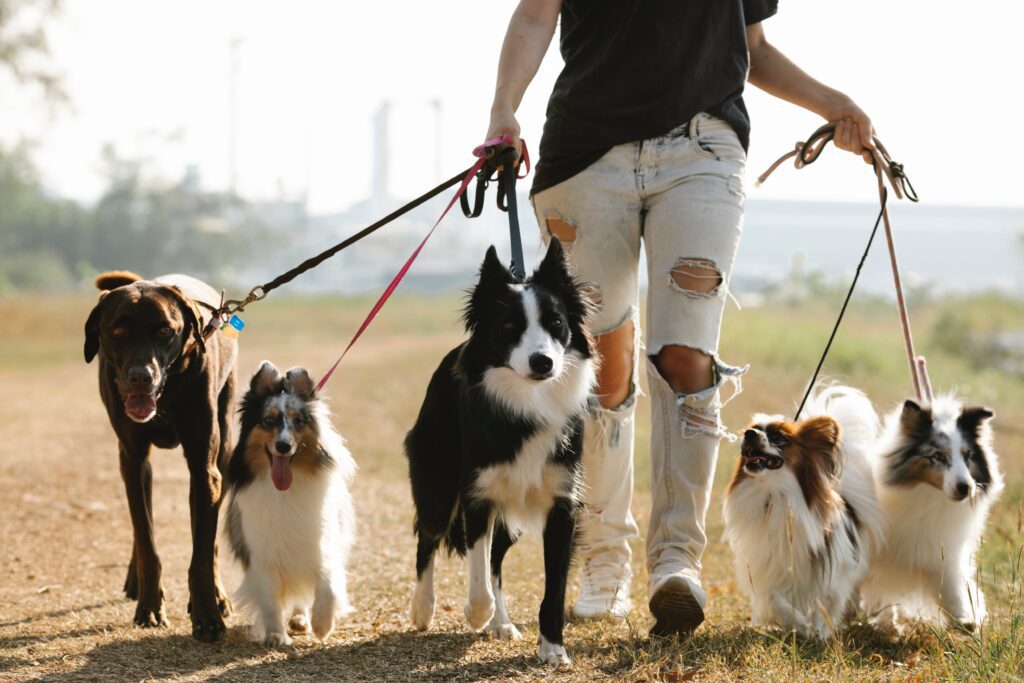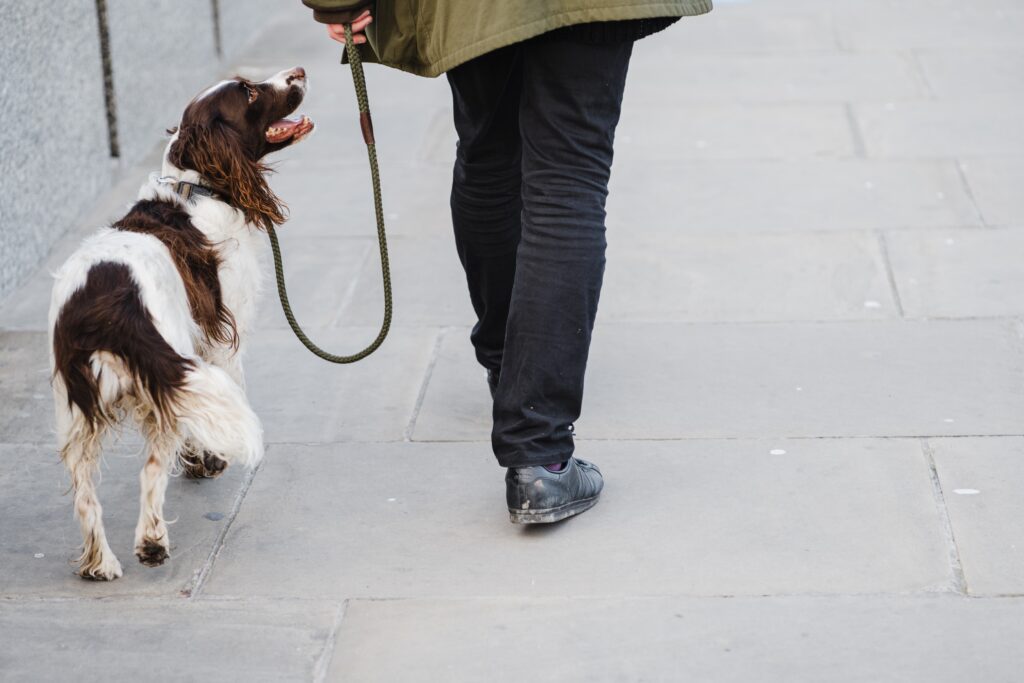Training Your Dog to Walk on a Leash in 5 Easy Steps

Leash training is an essential skill for every dog owner. It’s a common misconception that dogs naturally know how to walk on a leash, but in reality, it’s a skill that needs to be taught and practiced.
In this guide, we’ll walk you through a simple, effective 5-step process to leash train your dog, making your walks enjoyable for both of you.
Key Takeaways:
- Leash training is a gradual process that requires patience and consistency
- Introducing the leash and collar in a positive way is crucial
- A sound cue can effectively attract your dog’s attention
- Practice in a distraction-free environment before moving outdoors
Step 1: Introduce the Leash and Collar

The first step in training your dog to walk is familiarization with the leash and collar. Start by letting your dog sniff the leash and collar, then gently put the collar on. Reward your dog with treats and praise to create a positive association. Do this several times a day until your dog is comfortable with the collar and leash.
Step 2: Indoor Leash Training
Before you venture outside, start the training indoors with fewer distractions. Attach the leash to your dog’s collar and let them move around freely. Follow them around, keeping the leash slack. Reward your dog with treats and praise when they move without pulling on the leash.
Step 3: Teach the “Heel” Command
The command “heel” is a crucial component in the process of training your dog to walk. It teaches your dog to walk beside you, not ahead or behind. Start by holding a treat in your hand near your side. Say the command “heel,” and when your dog moves towards you to get the treat, reward them. Repeat this process until your dog understands the command.
Step 4: Practice Outside
Once your dog is comfortable with the leash and understands the “heel” command, it’s time to practice outside. Start in a quiet area with few distractions. As your dog gets better at walking on the leash, gradually introduce more distractions.
Step 5: Consistency and Patience
Training your dog to walk properly on a leash is not a one-time event. It requires consistency and patience. Make sure to practice daily and always reward your dog for good behavior. Remember, it’s okay if progress is slow. What’s important is that you’re moving in the right direction.
8 Additional Tips for Training Your Dog to Walk on Leash

Tip 1: Use the Right Equipment
Choosing the right leash and collar is crucial for the successful execution of this training process. A six-foot leash made of leather or nylon is usually a good choice. Avoid retractable leashes, as they can encourage pulling. For the collar, a flat collar is often sufficient, but head collars or no-pull harnesses can be useful for dogs that pull excessively.
Tip 2: Positive Reinforcement
Always use positive reinforcement in your training. This means rewarding your dog for good behavior. Rewards can be treats, praise, or a favorite toy. Remember, the reward should be given immediately after the desired behavior to reinforce the connection.
Tip 3: Start Young
The best time to start leash training is when your dog is still a puppy. Young dogs are generally more receptive to new learning experiences. However, older dogs can also be trained to walk on a leash, so don’t despair if your dog is no longer a puppy.
Tip 4: Keep Training Sessions Short
Dogs, especially puppies, have short attention spans. Keep your training sessions short and sweet—about 5 to 10 minutes at a time. You can have multiple short training sessions throughout the day.
Tip 5: Be Aware of Your Energy
Dogs are very sensitive to our emotions and energy. If you’re stressed or frustrated, your dog will pick up on that, which can make training more difficult. Try to stay calm and patient during your training sessions.
Tip 6: Gradual Desensitization
If your dog is scared of the leash, use gradual desensitization. This involves slowly getting your dog used to the leash by introducing it in a non-threatening way, such as by leaving it near their bed or feeding bowl.
Tip 7: Practice in Different Environments
Once your dog is comfortable walking on a leash in a quiet area, start practicing in different environments with more distractions. This could be a busy park, a neighborhood with other dogs, or a bustling city street. This will help your dog learn to focus on you despite distractions.
Tip 8: Addressing Leash Reactivity
If your dog barks, lunges, or shows other signs of reactivity when on the leash, it’s essential to address this. This often involves teaching your dog to focus on you and rewarding them for calm behavior when other dogs or triggers are present.
Conclusion
In conclusion, leash training is a crucial skill for every dog owner to master. Contrary to popular belief, dogs do not inherently know how to walk on a leash, and this skill must be taught and practiced consistently.
Whether you’re training a young puppy or an older dog, the process requires patience, consistency, and positive reinforcement. Keep in mind that it’s okay if progress is slow; what matters is that you’re moving in the right direction.
With these tips and strategies, you’ll be well on your way to successful leash training.
FAQs
How to walk a dog that pulls?
When your dog starts to pull, stop walking. Only continue when the leash is slack again. This teaches your dog that pulling won’t get them anywhere. You can also use the “heel” command to teach your dog to walk beside you. Remember to reward your dog when they walk without pulling to reinforce the behavior.
How to leash train an older dog?
Leash training an older dog follows the same basic principles as training a puppy, but it might require more patience as older dogs may be set in their ways. Start by introducing the leash and collar in a positive way. Practice indoors first, then gradually move outdoors.
How to walk a puppy for the first time?
Start by letting your puppy get used to wearing a collar and leash indoors. Once they’re comfortable, choose a quiet, safe outdoor area for your first few walks. Keep the first walks short, and let your puppy explore their surroundings. Remember, puppies have short attention spans, so keep training sessions brief and positive.
What is the right age for puppy leash training?
The best time to start leash training is when your puppy is between 8 and 16 weeks old. At this age, puppies are typically more receptive to new experiences and learning.
